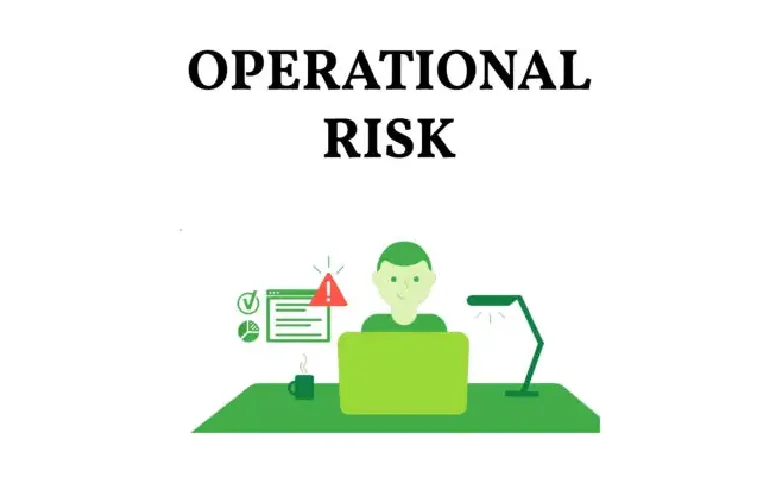When it comes to operational risk, senior management comes with different perspectives. One such excellent perspective is operational risk management.
Given the consequences of operational risks in any organization – financial and other losses — it is best to deploy operational risk management strategies within your enterprise.
If you want to adopt finance risk management strategies but have second thoughts about it, check these 8 advantages of financial risk management you must know!
In this article, you’ll not only learn all about operational risk but also learn how operational risk management can benefit your organization. So, let’s start. You can also check out the financial risk management course by Hero Vired.
What is Operational Risk?
Operational risk is the risk or danger of suffering losses because of ineffective or poor procedures, plans, or circumstances and rules that disrupt business operations.

A variety of circumstances can cause operational risk, including natural disasters, criminal activities like fraud, and employee mistakes.
The majority of firms recognize that their personnel and operational procedures will inevitably make mistakes. Practical corrective measures should be highlighted in evaluating operational risk to eradicate risk exposures and guarantee effective responses.
Operational risk can result in financial loss, a disadvantage over competitors, issues with employees or customers, and even business failure if not addressed. Let’s get an in-depth overview of Operational Risk Management, including the 5 steps of the ORM process.

Get curriculum highlights, career paths, industry insights and accelerate your technology journey.
Download brochure
How Does Operational Risk Works?
Operational risk is concerned with how tasks are carried out within a business enterprise, as opposed to what is generated in an industry. These operational risks are usually associated with the active decisions made about the operations and priorities of the company.
Although a failure, decreased productivity, or higher total costs are not certain outcomes of the risks, they are viewed as larger or smaller based on various internal management decisions.
Operational risk may be summed up as a human risk since it represents man-made procedures and thought patterns. It varies from one industry to another and should be taken into account when considering potential investment choices.
Operations risk is probably lower in sectors with less involvement with people.
What are the Causes of Operational Risk
Operational risk is usually caused by four different avenues: people, processes, systems, or external events. The detailed causes of operational risk are as follows:
- Global health crises, like the pandemic Covid-19
- Unfair trade practices, market manipulation, antitrust, contract breach, and regulatory compliance violations
- Natural disasters like wildfires, hurricanes, or earthquakes
- Man-made disasters like cybercrime, cyberterrorism, and terrorism
- Failure to comply with the procedure or policies of the company
- Negligence, insider cybercrime, insider trading, and other workplace-associated torts like discrimination or sexual harassment
- Unsafe practices, inadequate cloud usage, product defects, and supply chain disruptions
- Unpatched or obsolete IT software and systems
- Human errors like a missed deadline or data entry errors
What Are the Benefits of a Strong Operational Risk Management Program?
A company’s strategic goals can be achieved while maintaining business consistency during operational interruptions by setting up a robust operational risk management program. Depending on the organization, operational risk could have a very large scope. A solid Operational Risk Management shows customers that a business is ready for a disaster or loss.
Strong Operational Risk Management programs can give organizations better competitive benefits, including the following:
- Enhanced informed risk-taking
- Enhanced confidence in investor
- Next-level performance reporting
- Improved C-suite visibility
- Better and solid relationships between stakeholders and customers
- Better brand recognition and enhanced product performance
Are you preparing for an interview for the job role of a risk manager? If so, check these Top Interview Questions for Risk Management You Should Know About! This will help you definitely land a job.
5 Major Types of Operational Risks
There is a large variety of operational risks. Let’s explore the major types of operational risk in detail.
Internal Fraud:
In this type of operational risk, employees frequently plot together to evade internal safeguards and steal from the business.
Technology Failures:
Faults in computer software, hardware, or the way any of its components interact is considered under this type of operational risk.
Process Execution:
The lack of management to implement an effective plan or their inability to properly appraise a situation and apply the appropriate strategy.
Business Practices:
Operational practices that inflict harm on customers provide false information, encourage carelessness, or unintentionally fail to meet requirements.
Natural Disasters:
Severe weather, harsh winter, or fire-related circumstances can endanger tangible assets and make it difficult for workers to perform their regular duties. This type of operational risk is termed as natural risk.
Stages of Operational Risk Management
Though every company can choose to approach operational risk differently, here are four primary ways companies manage operational risk in the business. An operational risk management program begins with risk management teams engaging identifying the risks and controls in the organization. Every organization will have a different approach to measure operational risk but the first steps to understanding the nature of operational risks in your organization i.e., risk identification.

Risk Identification
Operational Risk Management begins with identifying what is wrong in the internal process. Identification of risks is necessary for risk management. Knowing the goals of the organization is the first step in risk identification. Any obstacle to an organization achieving its goals is a risk.
Brainstorm
Bring together top management and important shareholders for brief, dedicated brainstorming sessions to identify potential operational hazards.
It is essential to keep these meetings focused exclusively on risk identification, and executives should make plans to resist the urge to go into risk analysis or risk reduction.
Risk-Based Audit
This important aspect of business risk management can aid in not only identifying prospective operational risks but also in evaluating the bank’s present risk management strategy.
Before proceeding to the scenario analysis and implementation stage, prioritize prospective hazards by plotting them on a risk assessment grid.
Identify Critical Dependencies
Due to the risks’ appearance as crucial dependencies, banks may be confronted daily with operational risks without even realizing them.
Critical dependencies are actions and procedures that need to be carried out in a typical order to be successful. Banks may experience breaches, delays, and other operational concerns if these are not followed.
Monitoring and Reporting
Any operational risk management procedure needs to have ongoing risk control monitoring and reporting. To make sure they are working as planned without overtaxing the organization, it is crucial to test their effectiveness.
What Are the Challenges and Shortcomings of Operational Risk Management?
The challenges of ORM or operational risk management include the following:
- There is a widespread belief that businesses lack the resources necessary to invest in ERM or operational risk management.
- There is a need for a better grasp and comprehension of operational risk management procedures among boards and C-suite executives.
- To accurately depict an organization’s risk profile, it is important to have standardized procedures for measuring and assessing risk.
- Establishing a common language for talking about risks that may go ahead
- The process is difficult and complex and varies as per the latest technological advancements.
- The reason it doesn’t get much attention is that it is frequently grouped together with other functions like compliance and IT.
FAQs
Senior management maintains organizational-wide risk policies, systems, and processes to manage operational risk prevalent in all similar systems, processes, activities, and products.
Operational risk management comes with the following primary objectives:
- Risk prioritization
- Risk mitigation
- Adding more value to risk management
Operational risk is the chance of suffering losses due to mistakes, errors, or damage brought on by processes, systems, or people.
Operational risk management entirely depends upon the internal process. A few examples of operational risk are as follows:
- Private data breach led by cybersecurity threats
- Physical occurrences like natural disasters can affect a business.
- Business processes and controls
- Artificial intelligence, robotics, and automation-related technological threats
- Employee mistakes and employee behavior
Operational risk is the possibility of suffering a financial loss due to internal systems, personnel, processes, or other failures that could impair daily corporate operations. Losses can be incurred financially directly or indirectly.
Updated on December 19, 2024










